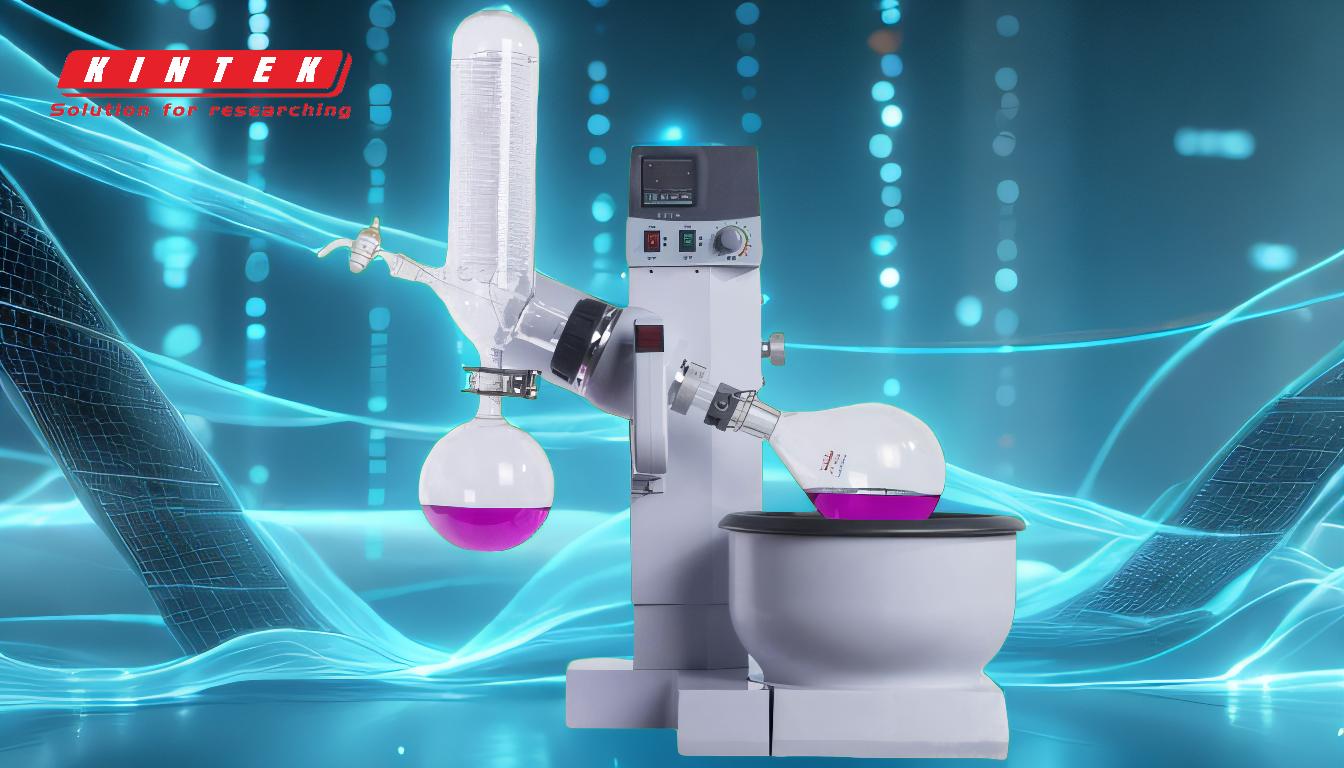Handling a rotary evaporator involves a series of well-defined steps to ensure efficient and safe operation. The process begins with setting up the equipment, including the water bath, chiller, and vacuum pump. The flask containing the sample is securely attached to the rotavap, and the system is gradually brought to a reduced pressure. The rotation speed is adjusted to create an even coating on the flask's surface, and the water bath temperature is set to facilitate evaporation. Throughout the process, it is crucial to monitor the system for any signs of bumping or excessive bubbling, which can be managed by adjusting the vacuum strength. Once the solvent is fully evaporated, the system is depressurized, the rotation is stopped, and the flask is removed. Safety precautions, such as wearing protective gear and working in a well-ventilated area, are essential throughout the operation.
Key Points Explained:

-
Initial Setup:
- Water Bath and Chiller: Turn on the water bath and set it to the desired temperature, typically between 35-45°C. Ensure the chiller is operational and set to 0-5°C to maintain the condenser's efficiency.
- Vacuum Pump: Connect and activate the vacuum pump. Set the vacuum controller to a level just above the evaporation rate, usually around 100mbar, to initiate the process.
-
Securing the Flask:
- Attachment: Connect the round bottom flask containing the sample to the rotary evaporator. Use a clip to secure the flask and ensure it is properly sealed to maintain vacuum integrity.
- Bump Trap: If necessary, use a bump trap to prevent the sample from splashing into the condenser during evaporation.
-
Initiating Rotation and Vacuum:
- Rotation Speed: Start the rotation motor at a speed appropriate for the sample volume, typically around 100 RPM. This helps create an even coating on the flask's surface, increasing the evaporation area.
- Vacuum Adjustment: Gradually increase the vacuum strength while monitoring the system for signs of condensation or bubbling. If bubbles reach the neck of the flask, re-pressurize the system slightly to prevent bumping.
-
Monitoring the Evaporation Process:
- Temperature Control: Ensure the water bath temperature is maintained at the set point. Adjust the vacuum as needed to manage the evaporation rate.
- Observation: Continuously monitor the flask for the complete removal of the solvent. Adjust the rotation speed and vacuum strength to optimize the process.
-
Completing the Process:
- Stopping Rotation and Vacuum: Once all the solvent has been evaporated, turn off the vacuum pump and stop the rotation. Carefully release the vacuum by opening the stopcock to return the system to atmospheric pressure.
- Removing the Flask: Safely remove the flask from the rotary evaporator. Ensure all connections are properly disengaged to avoid spills or breakage.
-
Safety Precautions:
- Protective Gear: Always wear appropriate protective gear, including goggles, gloves, and a lab coat, to protect against potential hazards.
- Ventilation: Operate the rotary evaporator in a well-ventilated area or under a fume hood to avoid inhalation of harmful vapors.
- Glassware Handling: Handle glassware with care to prevent breakage and potential injuries.
- Disposal: Follow proper disposal procedures for solvents and other liquids to ensure environmental safety.
By following these steps and adhering to safety guidelines, you can effectively and safely operate a rotary evaporator for various laboratory applications.
Summary Table:
| Step | Key Actions |
|---|---|
| Initial Setup | Set water bath (35-45°C), chiller (0-5°C), and vacuum pump (100mbar). |
| Securing the Flask | Attach flask securely, use a bump trap if needed. |
| Rotation & Vacuum | Start rotation (~100 RPM), adjust vacuum to prevent bumping. |
| Monitoring | Maintain water bath temperature, monitor solvent evaporation. |
| Completion | Turn off vacuum, stop rotation, depressurize, and remove flask carefully. |
| Safety Precautions | Wear protective gear, ensure ventilation, handle glassware carefully, dispose solvents properly. |
Need expert guidance on rotary evaporators? Contact us today for personalized assistance!











